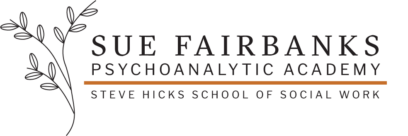By Tina Adkins, Ph.D., Research Assistant Professor, Texas Institute for Child & Family Wellbeing, Steve Hicks School of Social Work, University of Texas at Austin.
Important To Know:
|
As clinicians, we have all likely heard the term “Evidence-Based Practice” or EBP. However, when I became a clinical researcher, I learned just how challenging it can be to both create an intervention and build evidence for it. I would like to share a few hard-earned lessons with you, in hopes that it will give you a better understanding of what it really takes to create an EBP.
My story starts while I was working on my Ph.D. I knew I wanted to create a practical psychoeducation intervention for foster parents, one that really helped them understand foster kids on a deep level and that would help build their attachment relationship with these children. I researched what was already working so I could build both the intervention and the evidence from there.
First Lesson:
Building a successful intervention must start with a solid theory of change and, ideally, using some evidence already established in another context. I was working with clinicians who were both using and researching a psychoanalytic therapy called Mentalization Based Therapy for Families (MBT-F). This intervention was being used clinically with foster and adoptive families at the Anna Freud Center in London and results were quite promising. Researchers had already conducted studies showing evidence for this clinical intervention. So this is where I started… knowing I would use the theory of mentalization, as well as parts of this clinical intervention.
Second Lesson:
Know your theory VERY well. Luckily, I was studying this theory in graduate school, so I had already gained this in-depth knowledge. To build an intervention based on theory, I also needed to understand the other interventions that use this theory. So, I trained in several versions of this clinical intervention. I gathered as much information as I could. As a result, I discovered that all versions of MBT had a psychoeducation component! This was a great discovery as it provided me with many ideas I used to build my intervention. I was able to pull from what already worked, to create something innovative.
Third Lesson:
Pilot test (i.e., run a small trial of) the intervention to get real world experience of what works and does not work. This is a very important process that really helped me hone the intervention and create research processes that work. For example, I found it very difficult to get foster parents to attend many classes or a long intervention, so I structured my intervention in as few classes as possible (for my intervention, this was three classes). Also, attendance was generally low so I needed to talk to participants and really find out what would draw them in. In my study, foster parents desperately needed child-care to be able to attend a three-class series. All of these discoveries were essential to the success of both the intervention and my study. Running a well-thought-out pilot of the intervention and gathering careful feedback from all participants as well as any staff involved, is a vital part of creating an EBP.
These are just a few of the lessons I learned during my work on both creating an intervention and building evidence for Family Minds. There are many more steps necessary, but if these basic building blocks are present, you have a much greater chance of building the evidence needed to finally call your intervention an EBP. Have an idea for an intervention? Your clinical knowledge is your wellspring. You already have what it takes to develop an intervention! To further your ideas, pair with a Social Work or Psychology graduate student who is interested in research and together you could change the world, one EBP at a time.
For Your Information:
| Thinking about trying to measure client outcomes and build evidence for your intervention? Great idea! While a thorough description of the research process necessary to establish evidence is outside the scope of this article, an important potential take away is that engagement in that process is within reach for any interested and motivated clinician. As suggested, working with a social work graduate student or university professor is great way to do so. You may also be able to help establish evidence on an existing or developing model by connecting with the model creators and offering to participate in a clinical trial. A thought exercise consisting of designing a test for your own therapeutic model(s) of choice (from choosing the sample, to identifying measures to track outcomes of interest and designing data collection procedures, through examining and reporting on trends in the data) is another way to learn about the process of establishing evidence. We encourage you to reach out for support and partnership! |
Additional Reading
Want to know more about the nuts and bolts of Evidenced-Based Practice? Go here: https://guides.mclibrary.duke.edu/c.php?g=158201&p=1036021
To read more about the first study of the Family Minds intervention, go here: https:// txicfw.socialwork.utexas.edu/research/project/family-minds-attachment-basedmentalizing-psycho-educational-intervention-foster-adoptive-parents/
To read more about Mentalization-Based Therapies and the Anna Freud Center: https://www.annafreud.org/training/mentalization-based-treatment-training/
Visit www.familyminds.org to discover more about the intervention mentioned in this article and here to find out more about Family Minds research: https:// txicfw.socialwork.utexas.edu/research/project/family-minds-attachment-basedmentalizing-psycho-educational-intervention-foster-adoptive-parents/
